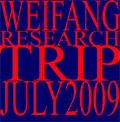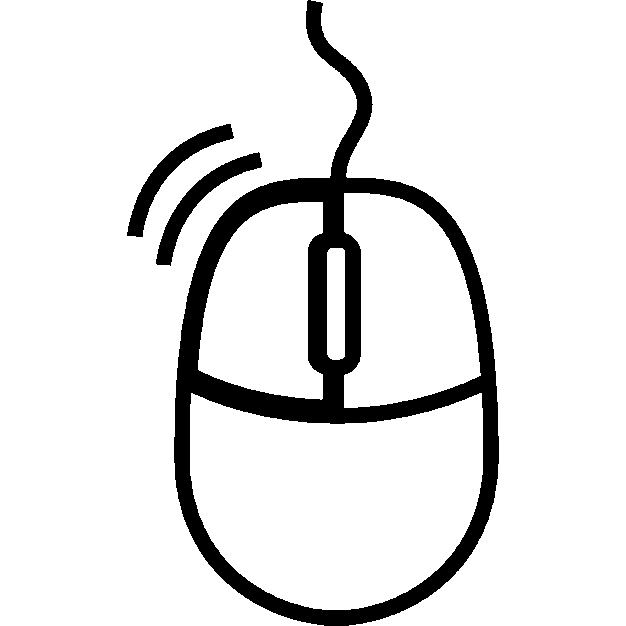
... my research trip to Weifang - July 2009 ...
A Letter From Weifang ...
26th July 2009
Hong Kong
Dear Weihsieners,
I have now completed my research trip to the mainland and am spending
some time in Hongkong. Before going into details, I would like to thank everyone on
this list who has helped me out, but especially Ms Mary T Previte, who was
particularly helpful in putting me in touch with people like Mr Jeff Liu and Mr Sui
Shude in Yantai and Weifang who were tremendous hosts for my time in Shandong.
The first book I read on Weihsien was Gilkey’s Shantung Compound, and it was
very much on my mind as I started out from Beijing, taking a short taxi ride from my
hotel to Beijing’s main train station, riding in air-conditioned comfort through slowmoving
traffic. I had splurged a little, buying hard-sleeper train tickets to Yantai, and
enjoyed the train trip through fairly rural country with a clean berth to recline in and
vendors wandering up and down the corridor selling peanuts, fruit, drinks and other
snacks.
I rolled into Yantai quite early in the
morning, and asked the driver to drive along
a road that hugged the beach, taking in the
shoreline and all of the recent development
that has remade the face of the city. My first
visit was in 2002, and even in the short span
of seven years much has changed. The small
cluster of Western buildings on the beach
that had seemed rather ignored during my
first visit have in many cases been pushed
into the shadows of constructions products that are almost monstrous in scale.
Others seem to be slowly transforming into up-scale restaurants, bars, or art galleries.
But on the whole, the old Yantaishan (Consular
Hill) area is fairly well-preserved, and of course
the Chefoo School buildings remain safely
tucked away behind the protective walls of a
PLA navy base. In contrast, though, the Temple
Hill houses seemed to be in much sorrier shape.
Now used as multi-family residences, windows
sag from their frames and the yards are unkempt,
leaving a strong air of neglect.
After two days in Yantai, I booked a ticket by intercity bus and soon found
myself on the road and headed for Weihsien. What a trip! The landscape was just
beautiful—green mountains with flecks of white rock poking through, neatly-tended
fields and clusters of houses and villages. Some of my friends in Yantai had led me to
believe Weifang to be not worth visiting, almost a nasty smudge of a city on the way
to nicer places. But as our bus made its way along the highway and entered the city, I
found myself in what was almost a garden. Staying in a rather budget hotel, I was
pleasantly surprised to find a nearby river which had been attractively landscaped
along both banks with footpaths, benches and trees gently arching overhead.
The next day, I was met by Mr Sui and two other assistants from Weifang’s
Foreign Affairs Bureau
and we set out for the
camp. We initially
stopped near a bridge a
short distance from the
camp where I was able
to take a photo of what
has become Ledao
Guangchang ????
(Plaza of the Happy
Way?). I thought it
particularly appropriate
that, situated behind the
camp, is Weifang’s
People’s Hospital and
what was once known
as #2 Middle School, now Guangwen Middle School ????, thus continuing the
old compound’s tradition of medical care and education.
From what I saw, all of the old camp buildings were in active use in one way
or another. Some of the old dormitory units are used to house the twenty or thirty
gardeners and groundskeepers who are
now employed at the site. Mr Sui related
to me how he had intervened to save
these particular buildings, arriving one
day to find workers busily removing the
roof tiles in preparation for demolition!
Wandering around the elegant
memorial site, I couldn’t help but feel
amazed at how wonderful a job the
Weifang City Government had done in
making a monument to the camp in a
way that was fully accessible to visitors.
While I was wandering around the monument, I overheard a small group of highschoolers,
perhaps three or four of them, discussing the history of the site, before
snapping a group photo by the water’s edge.
The Shadyside Hospital Building, with the Eric Lidell Memorial in front of it,
initially appeared to be unused, but on a trip back the next day, I noticed that a
basement door was open (I didn’t have the nerve to go in). Some children were
kicking a ball back and forth near the front steps, while a middle-aged man was taking
advantage of the building’s shade to escape the heat and do some reading. When
wandering around the back of the building, I saw some potted plants and a
fluorescent light on in a main floor window, and noticed that a large air-conditioning
unit had been bolted to the side of the building. I can’t imagine it being used as an
office—perhaps one or two rooms inside are being used as a residence?
Overall, I thought that the Shadyside
building was in fairly good shape. Peering in
through the front entrance way, there really
wasn’t all that much to see, but there were
no obvious signs of water damage or
anything else. It was interesting to see that
the cornerstone with the inscription,
‘Shadyside Hospital, 1924,’ had been
defaced, with the English version only
somewhat readable and the Chinese side
almost completed obliterated.
The school buildings and the museum, which I visited the next day, were in
good shape, probably very much as they were during the 2005 celebrations, and I
found the material in the museum to be very helpful. Other buildings which I saw
later seemed to have been taken over by the local branch of the Chinese Communist
Party, which seemed quite ecumenical given the history of the buildings as Japaneserun
internment camp and Presbyterian mission compound.
I interrupted a game of hoops to
snap this shot—on closer inspection, I
saw the sign above the main entrance
said that it was an active centre for old
party members ‘???????,’ but
on this particular day, I didn’t see
anything going on inside the building.
On the opposite side of the basketball
court, there was another building which
definitely showed more signs of life,
with the front door open and a small
crowd of older women chatting and
drinking tea off to the side. These buildings were quite close to the People’s Hospital
buildings, and I noticed a number of people clad in various bandages wandering
about. One elderly man gave me a massive grin before pointing in the direction of the
Shadyside Hospital building, thinking I hadn’t found it yet.
The black and white signboard on the front column
reads: ?????????, ??????????,
which I think is simply the ‘Guangwen Community C.C.P.
Branch Committee,’ while the red banner is just some
sloganeering about residential fire-prevention.
Comparing the Weihsien site to other similar places
in China, or even just the places I mentioned above in
Yantai, I really get a sense of how carefully the internment
site has been preserved, with buildings either set aside and
protected, used for educational purposes related to the camp,
or integrated into normal community life.
Overall, it really was a great trip, both really useful for my thesis and also quite
enjoyable. Being able to finally see all of these sites after reading about them in various
books, diaries and other records really brought the history of the place to life for me. For
that, I owe a great debt of thanks, both to people in Shandong like Jeff Liu and Sui Shude,
but also to all of the former internees who have been so helpful in pointing the way.
Sincerely,
Jonathan Henshaw
jonathan.henshaw@ualberta.ca

Introductory panel at the main entrance to the new Ledao Square.

This internee list contains approximately 1,600 names and is based on documents recovered by the Weifang Gov't.; other sources indicate that just over 2,000 interned civilians passed through the gates of Weihsien, with some being repatriated or transferred between camps at various times.




another scene from the wall surrounding the stele, this one with a socialist theme

A section of the surrounding wall that includes an artist's portrayal of various scenes of camp life

乐道广场 (lèdào guǎngchǎng) Happy Way Square or Plaza of the Happy Way, is a change from the old name, 乐道院 (lèdàoyuàn) Courtyard of the Happy Way, that denotes more openness and has a more public feeling.

That's me next to the front stairs of the hospital.


A shot of the gate leading to the remaining dormitories. These buildings are now used to house between 20-30 people, depending on the season, who work as gardeners and groundskeepers for the site.

A bell that has been erected nearby

The memorial stele with Weifang People's Hospital in the background

the Shadyside Hospital main entrance

'Shadyside Hospital, 1924.' The adjacent face of this stone appears to have: '乐道院 1924' (Courtyard of the Happy Way) engraved on it, but has been even more vandalised than the English enscription. This damage may have been done during the Cultural Revolution.
#





